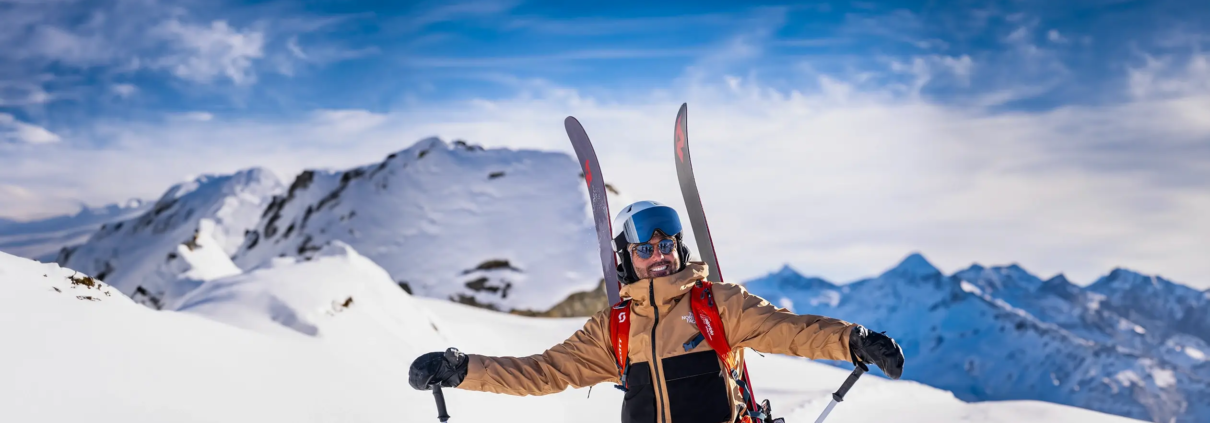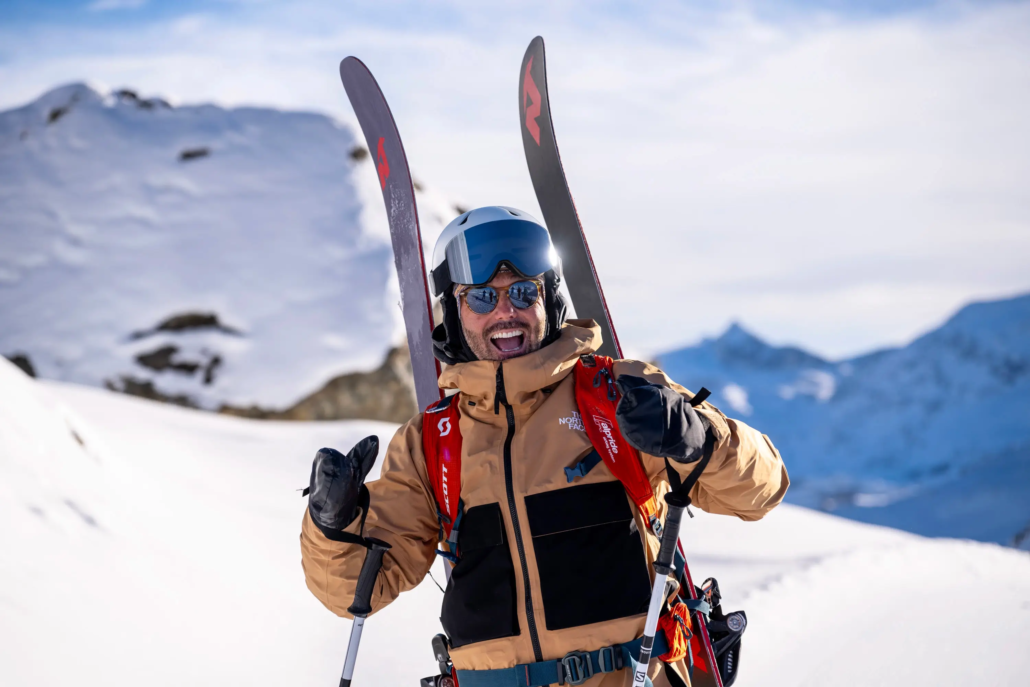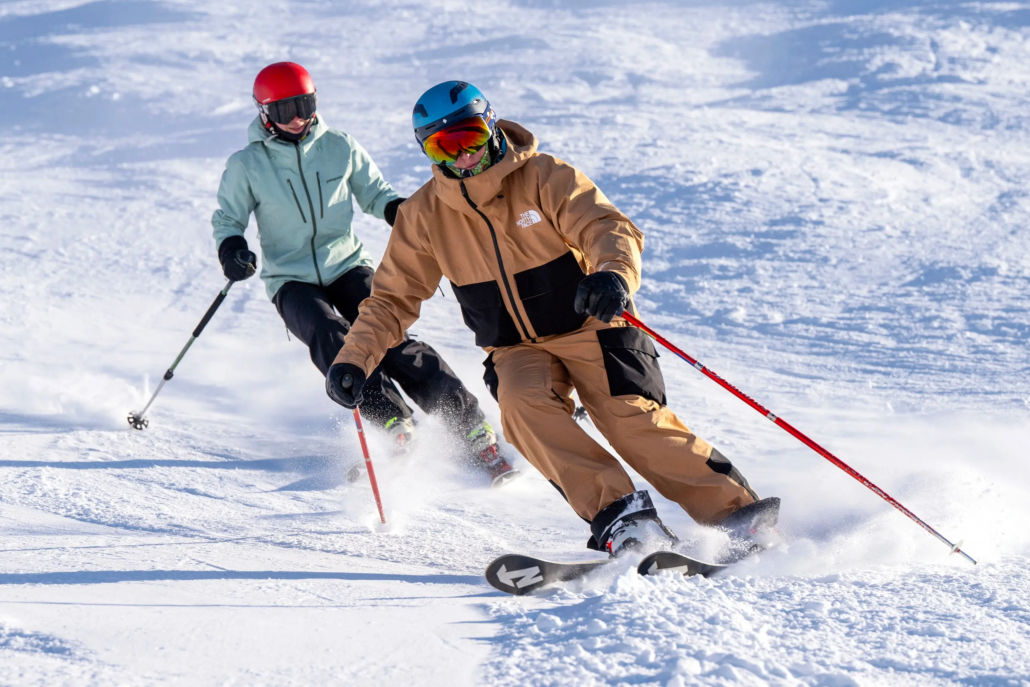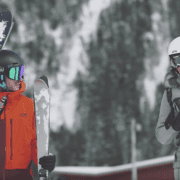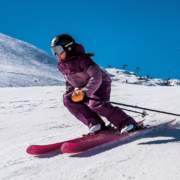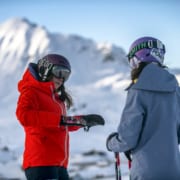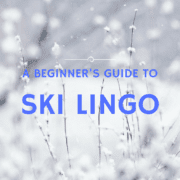Oh, to master the technique of layering for a day of skiing.
If you can ace it, you’ll be warm, dry and happy all day. It has taken us some time to get this down to a science. But if you layer for skiing properly, you’ll feel comfortable for a day out on the slopes – which makes all the difference in the world!
HOW TO LAYER FOR SKIING
The best way to layer for skiing is to do it in three key sections:
- Base Layers – should wick away moisture
- Mid Layers – should trap body heat
- Outer Layers – should keep away the wind, rain and snow
This is the recipe for optimal warmth, paired with the flexibility to shed or add layers easily if the weather changes (which it often does in the mountains). Our friends at Ellis Brigham have tons of high-quality options for all your layers, which we wear on the hill all winter.
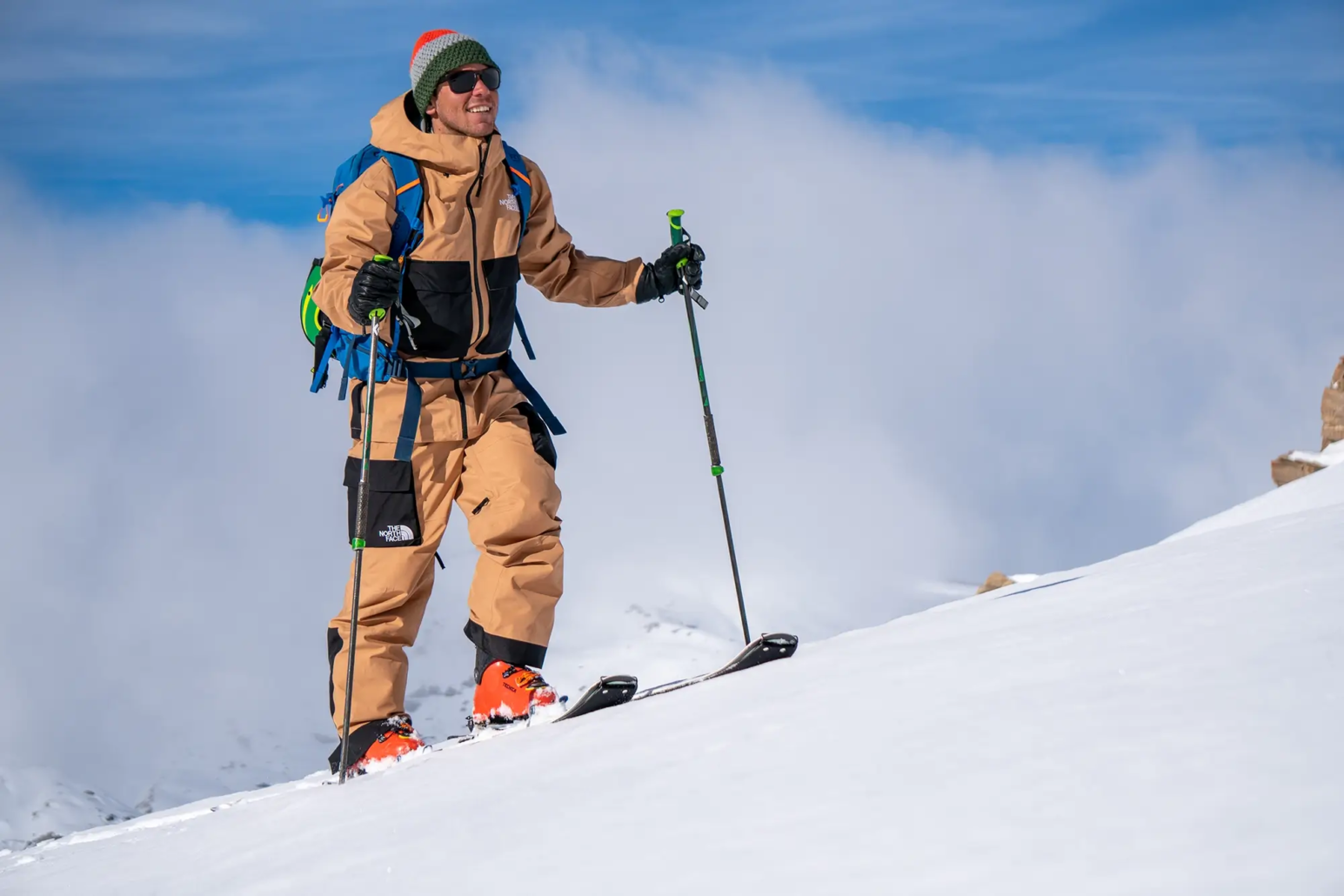
Base Layers
In general, your base layers should fit closely to your body. Merino wool is one of the best materials for base layers, as it’s warm but also wicks away sweat. Synthetics like nylon and polyester are also good at keeping the moisture off your skin.
- One pair of Quality Socks – You should always wear one pair of good quality socks rather than layering them on. This way, you’ll avoid weird lumps in your socks, which are painful and can lead to blisters ruining your whole week! The other thing to ensure is that your socks are long enough to come above your boot so you don’t get any uncomfortable rubbing. Many brands make good ski socks, but one of our favourites is Smartwool. If you want the complete low down, this article on ski socks covers all the bases, including why ski socks are such a vital part of the kit and what socks you should wear.
- Long-sleeve Thermal Top – A form-fitting top keeps you warm and allows mobility. We love The North Face thermals, which our instructors and off-hill team wear yearly.
- Thermal Leggings – Again, you want a fitted pair of leggings in a breathable fabric similar to your top. Usually, you can purchase a matching pair of tops and bottoms. Also, don’t forget to tuck your top into your bottoms. If you take a tumble, the last thing you want is snow sneaking up and into your waistband. Eek!
Mid Layers
Typically, we skip a mid-layer on our legs. Our legs naturally stay warm, doing lots of hard work on the slopes.
- Long-sleeve Mid Layer – This layer should keep your heat trapped close to your body. The most common material for mid-layers is fleece. Other options could be a thin, down jacket or a thin Merino wool sweater. We like one that zips, so when we’re having a coffee inside, we can unzip and efficiently cool down.
Outer Layers
The most important part of your outer layer is that it’s waterproof. Gore-tex is now widely used and is part of most ski gear if not other waterproof technology.
- Waterproof Salopettes – Look for salopettes with zippers along the inside or outside of the leg. When you get a little warmer, this is a huge perk. Some are just a shell, and others come with insulation – choose what’s best for your body temperature and the time of year you’ll be skiing.
- Waterproof Jacket – Thanks to fantastic ski gear technology, you can find a super lightweight and breathable waterproof shell jacket that keeps you warm year after year. Again, there are jacket options with insulation as well. Most ski jackets these days should include ample zippered pockets for phones, piste maps, lip balm, and a few mini chocolates.
- Waterproof Gloves or Mittens – Cold and wet hands can ruin a ski day! Invest in some high-quality gloves or mittens that are comfy and fit well. For those of you with super cold fingers, technology is here to save you. They now create heated gloves that stay warm for up to 10 hours. Charge the battery overnight, and then choose the desired temperature. Seriously, best invention ever?
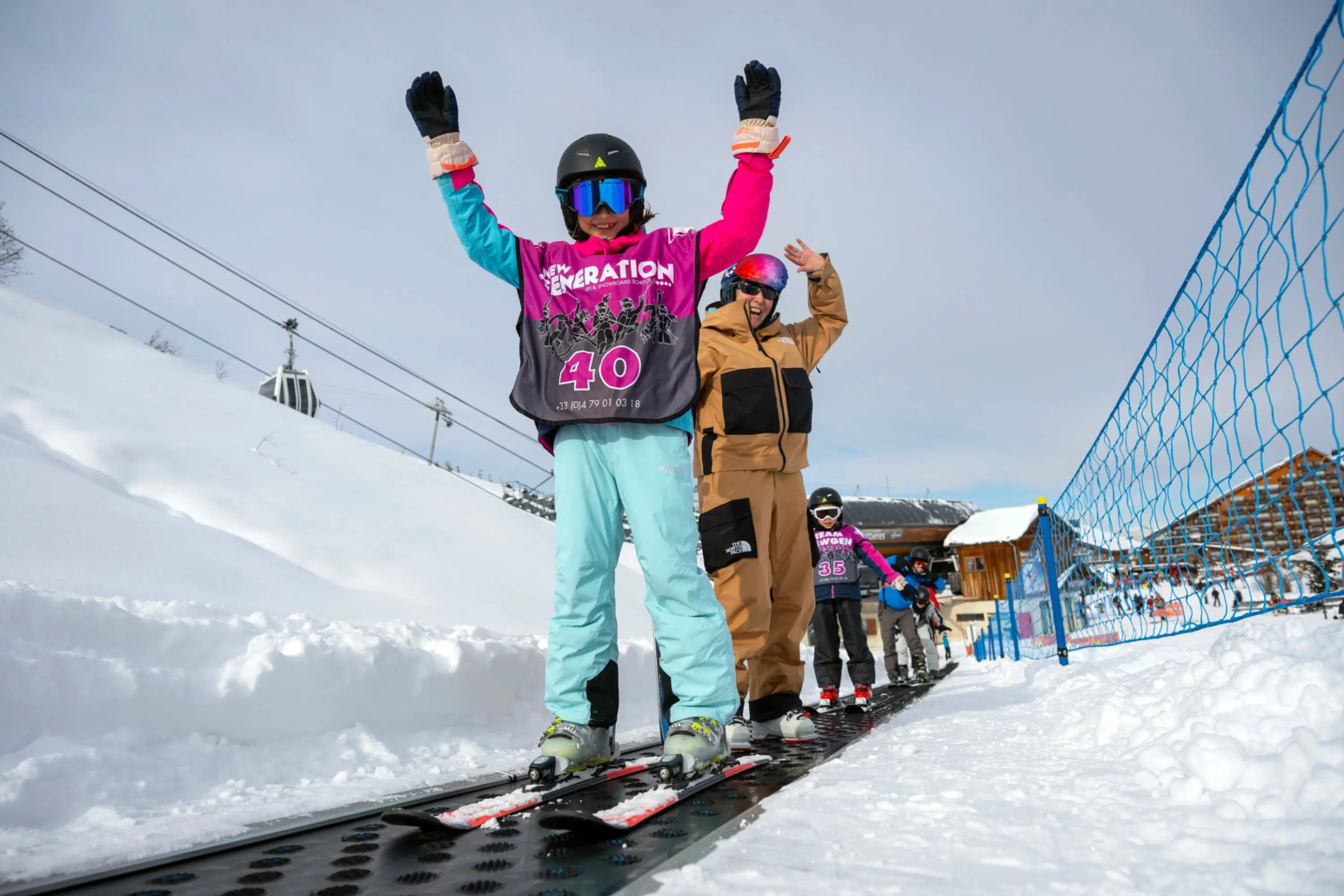
Need help figuring out what else to pack? Check out our Ultimate Ski Trip Packing List.
Extra Gear
- Down Jacket – Throw a down jacket in your backpack if it gets cold. They’re very lightweight, and you won’t regret it.
- Buff – Many people wear a buff to keep their neck and face warm on colder days. These vary from thin cotton or merino wool to thick fleece, so you can choose one that’s appropriate for you and the weather.
- Extra Gloves – The even more prepared throw extra gloves in their rucksack if theirs gets too wet. In comparison, others opt to wear a thin pair of gloves under their waterproof ones. This is your preference. Neither way is necessarily warmer. There are some tremendous thin gloves (inexpensive, too) that you can use with your smartphone, which is super handy when you need to call a friend on the chair or check your Ski Tracks App and don’t want to freeze your fingers off.
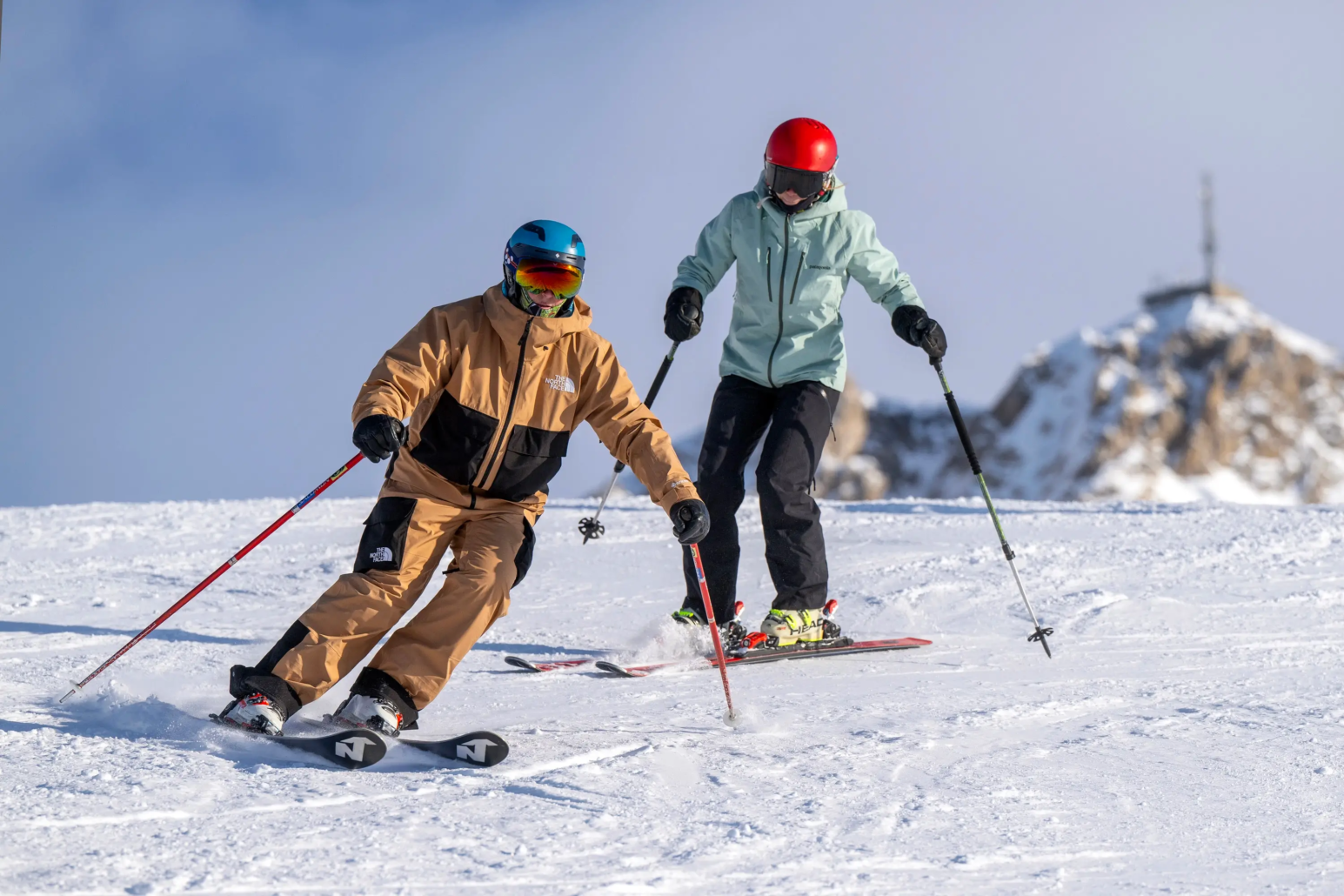
Is high-tech gear your thing? Here are the best high-tech ski gear items on the market.
If you only ski once a year, it can feel like this is a lot of gear for one holiday. But in reality, most of this gear can be used for other outdoor activities and sports – you may already have some sitting in your closet. What’s most important is that once you learn how to layer for skiing, you can adapt to changes in weather.
Need to get a few bits of gear before your ski trip?
Stock up on anything you need from Ellis Brigham with our exclusive 10% discount code. Click below to receive your voucher.

